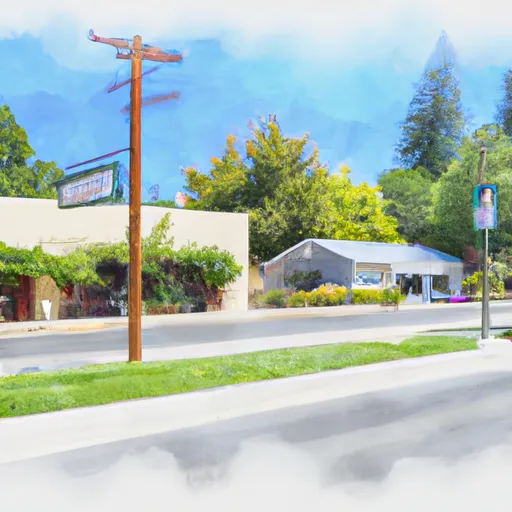-
 Snoflo Premium
Snoflo Premium
Get unlimited access to all our content
With no Ad interruptions! - Start Your Free Trial Login with existing account
Auberry
Eden Index
Climate
9.9
•
Recreation
8.0
•
Community
3.4
•
Safeguard
7.6/10

Auberry, California is located in the Sierra Nevada foothills and experiences a Mediterranean climate with hot summers and mild winters. The area is dependent on snowmelt for its water supply, which contributes to the hydrology constituents of the region. Outdoor recreation opportunities in the area include hiking, fishing, and hunting in the Sierra National Forest, as well as mountain biking and off-roading in the nearby Kaiser Wilderness. The San Joaquin River also flows through the area, providing opportunities for rafting and kayaking. With its beautiful natural scenery and numerous outdoor activities, Auberry is a popular destination for nature enthusiasts and outdoor adventurers.
What is the Eden Index?
The Snoflo Eden Index serves as a comprehensive rating system for regions, evaluating their desirability through a holistic assessment of climate health, outdoor recreation opportunities, and natural disaster risk, acknowledging the profound impact of these factors on livability and well-being.
Climate Health Indicator (CHI): 9.9
Auberry receives approximately
770mm of rain per year,
with humidity levels near 73%
and air temperatures averaging around
15°C.
Auberry has a plant hardyness factor of
9, meaning
plants and agriculture in this region tend to thrive here all year round.
By considering the ideal temperature range, reliable water supplies, clean air, and stable seasonal rain or snowpacks, the Climate Health Indicator (CHI) underscores the significance of a healthy climate as the foundation for quality living.
A healthy climate is paramount for ensuring a high quality of life and livability in a region, fostering both physical well-being and environmental harmony. This can be characterized by ideal temperatures, reliable access to water supplies, clean air, and consistent seasonal rain or snowpacks.
Weather Forecast
Streamflow Conditions
San Joaquin
Area Rivers
San Joaquin
Snowpack Depths
San Joaquin
Reservoir Storage Capacity
San Joaquin
Groundwater Levels
Recreational Opportunity Index (ROI): 8.0
The Recreational Opportunity Index (ROI) recognizes the value of outdoor recreational options, such as parks, hiking trails, camping sites, and fishing spots, while acknowledging that climate plays a pivotal role in ensuring the comfort and consistency of these experiences.
Access to outdoor recreational opportunities, encompassing activities such as parks, hiking, camping, and fishing, is crucial for overall well-being, and the climate plays a pivotal role in enabling and enhancing these experiences, ensuring that individuals can engage in nature-based activities comfortably and consistently.
Camping Areas
| Campground | Campsites | Reservations | Toilets | Showers | Elevation |
|---|---|---|---|---|---|
| Pine Flat Rec Area | 52 | 586 ft | |||
| Island Park - Pine Flat Lake | 97 | 1,157 ft | |||
| Camp Edison | 252 | 5,453 ft | |||
| Bretz | 12 | 3,281 ft | |||
| Trimmer - Pine Flat Lake | 10 | 938 ft | |||
| Smalley Cove | None | 1,034 ft | |||
| Choinumni | 36 | 557 ft | |||
| Redinger | 5 | 1,374 ft | |||
| Swanson | 9 | 5,698 ft | |||
| Dorabelle | 71 | 5,418 ft |
Nearby Ski Areas
Catastrophe Safeguard Index (CSI):
The Catastrophe Safeguard Index (CSI) recognizes that natural disaster risk, encompassing floods, fires, hurricanes, and tornadoes, can drastically affect safety and the overall appeal of an area.
The level of natural disaster risk in a region significantly affects safety and the overall livability, with climate change amplifying these risks by potentially increasing the frequency and intensity of events like floods, fires, hurricanes, and tornadoes, thereby posing substantial challenges to community resilience and well-being.
Community Resilience Indicator (CRI): 3.4
The Community Resilience Indicator (CRI) recognizes that education, healthcare, and socioeconomics are crucial to the well-being of a region. The CRI acknowledges the profound impact of these elements on residents' overall quality of life. By evaluating educational resources, healthcare accessibility, and economic inclusivity, the index captures the essential aspects that contribute to a thriving community, fostering resident satisfaction, equity, and social cohesion.

